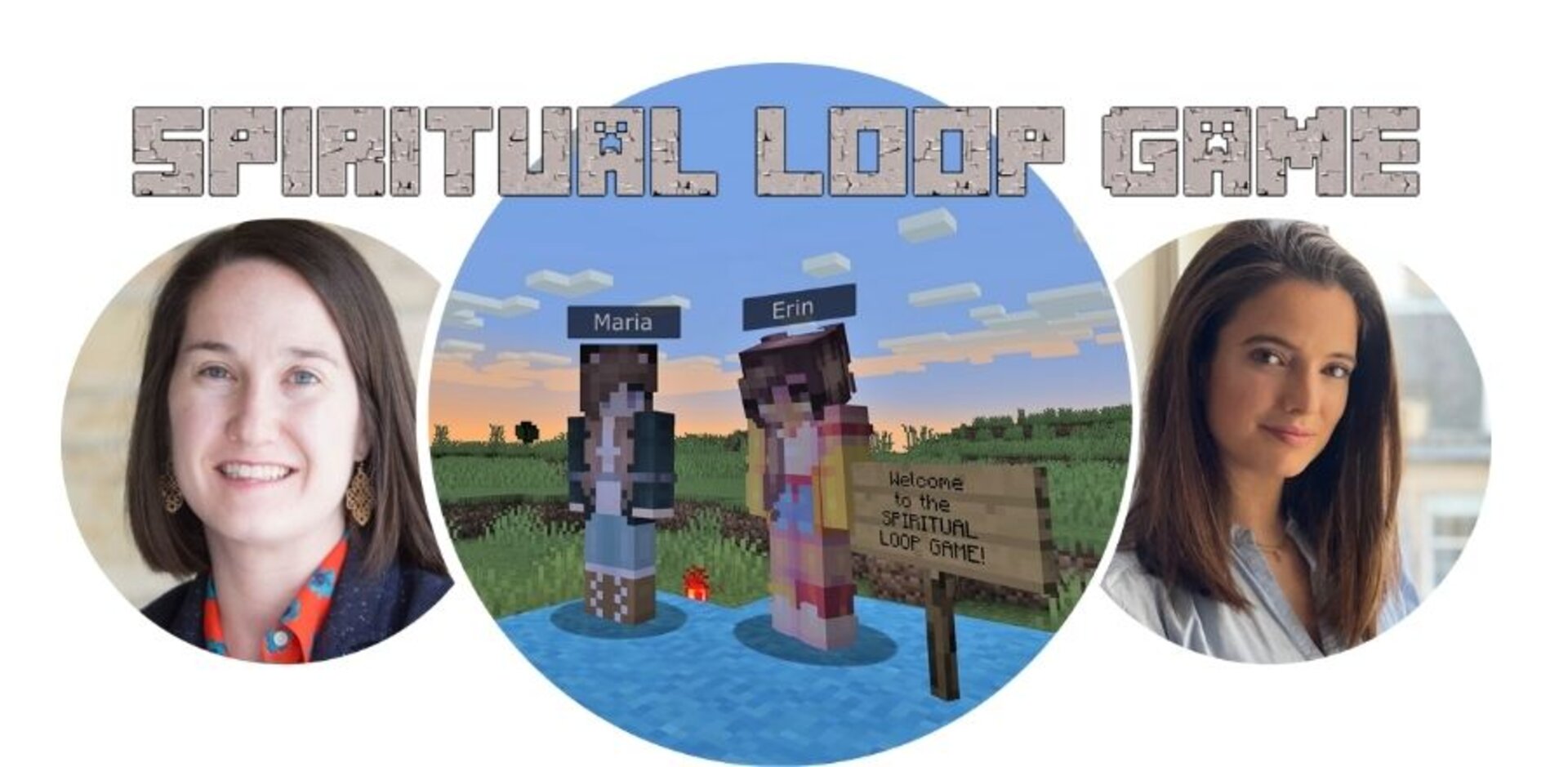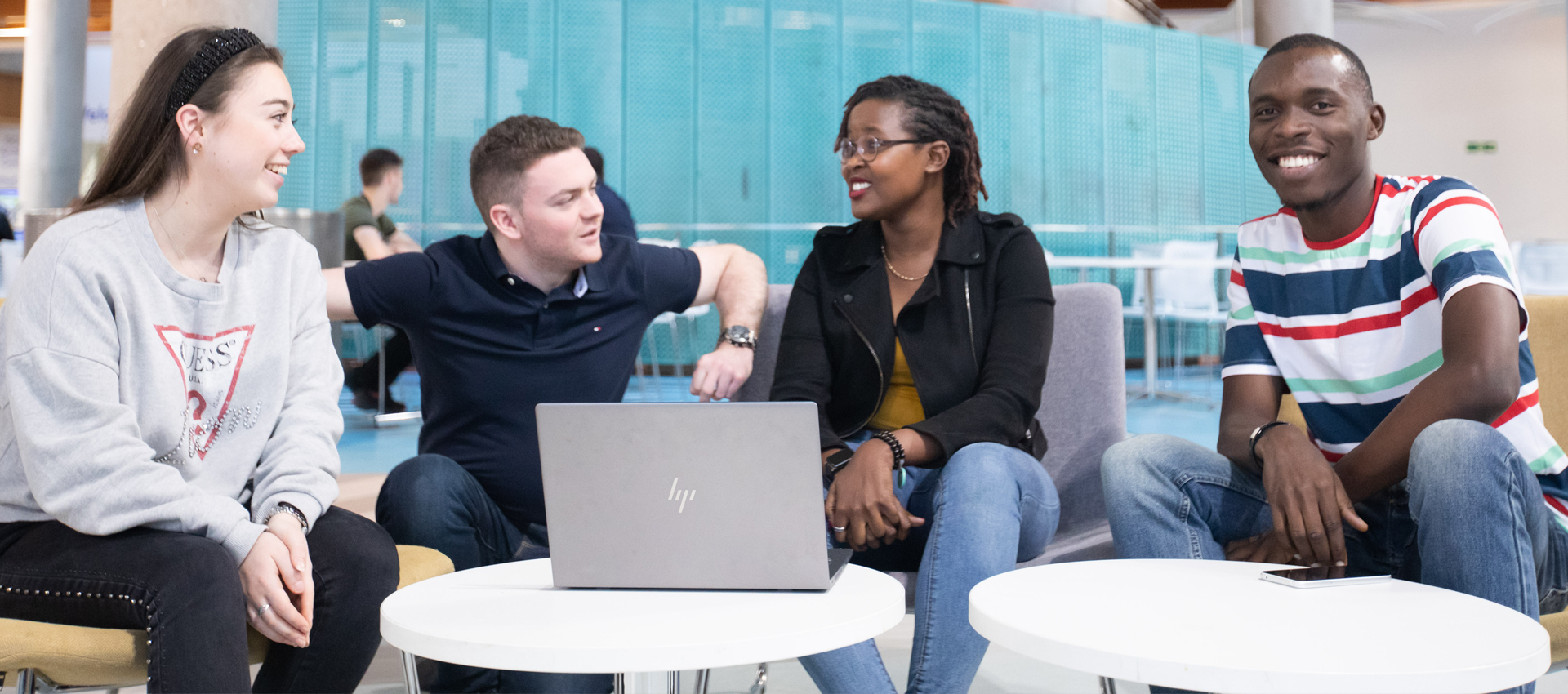GCU PhD student helps develop video game to engage young disabled people with religious communities

A Computing PhD student from GCU has been developing a video game prototype to help young people with disabilities engage with spiritual and religious communities.
Computing PhD student Maria Insa-Iglesias has been working in collaboration with Research Fellow Dr Erin Rafferty from the Centre of Theological Inquiry in a research project aimed at making video games inclusive to all backgrounds of people.
The project, titled “the Spirtual Loop Project” involves engaging young people using the power of Artificial Intelligence (AI). Involving the popular game Minecraft, young people will get the opportunity to engage with religious communities using the power of video games.
We spoke to Maria about her role within the project and her experiences during the collaboration so far:
Firstly, could you please explain your role within the Spiritual Loop Project?
“The Spiritual Loop Project (SLP) is a project funded by a grant from the Templeton World Charity Diverse Intelligences initiative and a collaboration between the Centre of Theological Inquiry (CTI) and Research Fellow Rev. Dr. Erin Raffety, and Computing PhD Student Maria Insa-Iglesias from Glasgow Caledonian University (GCU). The SLP is an interdisciplinary research project that sits between two complementary but silo-ed literatures: video gaming and disability; and video gaming and spirituality.
My role as a Technology Fellow is to develop a video game prototype with an Artificial Intelligence component that aims at facilitating cooperative play and gives people in congregations, with and without disabilities, the opportunity to engage and grow spiritually.”
How has your experience been of being involved in the collaboration between GCU and CTI so far?
“Partnering with Erin and CTI has opened our eyes to the importance of videogames to connect people of all backgrounds and beliefs. We are experimenting with how videogames can provide a platform to collaborative play and build communities by connecting with people, with and without disabilities, who haven’t met for a long time and give them additional opportunities for self-expression and leadership that may not be currently available.
Last November, CTI began conversations with GCU where CTI Director, Dr. William Storrar, maintains an affiliation. CTI was able to connect with me thanks to Prof. Gordon Morison, who also supported me on the integration of the AI element in the videogame. Since the end of last year, Dr. Erin Raffety and I began working closely on the design of the video game levels while I was exploring the most effective Artificial Intelligent (AI) tools to be included. Erin shared from her initial fieldwork the existing enthusiasm out there for video games not just from the participants, but also from religious communities embracing the project as well. She didn’t expect the unadulterated joy that people have for video games to move her so much, and she was surprised with the depth of the theological discussions in both the fieldwork with participants and the game development.
A positive feedback session with the Advisory Board of the SLP, of which Professor Gianna Cassidy is part of, marked the start of the game development phase. I started developing the multiplayer Minecraft server expanding the game’s functionality and creating our own special features such as the AI component, elements of worship and faith practices. This is being achieved using CraftBukkit, which offer the ability to load Minecraft plugins, and Bukkit API, which allows integrating new features that make our server unique.”
Any challenges during the project?
“One of the challenges is the diversity of the research participants with a variety of ages, interests, videogame skills and experiences of disabilities. This kept us mindful during the videogame design phase when creating the level challenges that participants will need to complete cooperatively.
Another challenge we encountered is the time constraint and complexity of the game. During the development phase, having the whole videogame concept idea as a reference has been very helpful. However, we were aware of the time limitations, and we had to find a balance and decide which game levels and elements were essential to be developed in this prototype. We made adjustments bearing in mind how to create a meaningful experience that give participants enough vision and purpose to facilitate insight and connection.
We believe this game prototype will allow us to evaluate the potential that this game has to create more inclusive communities for congregants with disabilities.”
By Rachael McAlonan
Got a SCEBE or GSBS story? Email me at Rachael.McAlonan@gcu.ac.uk or connect with me on social media
